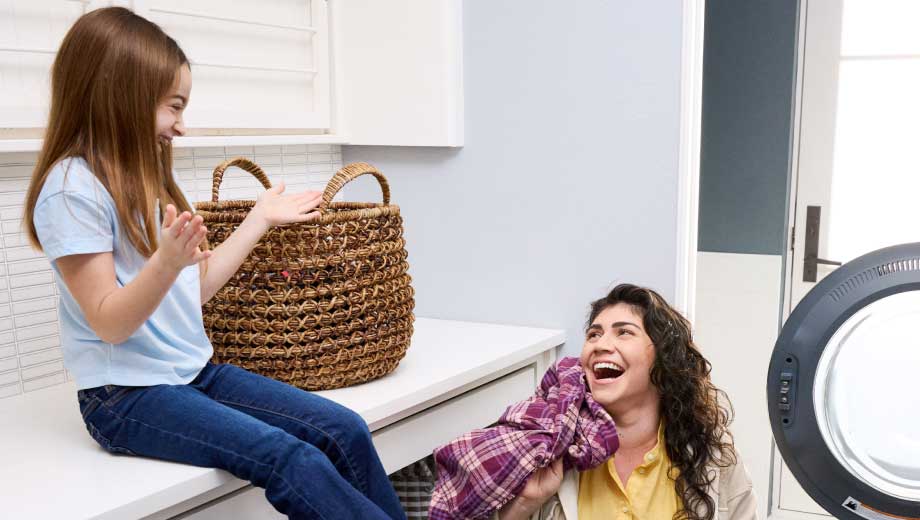Break through the weight loss-gain cycle
If you've tried other methods without longterm success, it's time to try something different. Endoscopic Sleeve Gastroplasty (ESG) can help you break through weight loss barriers to finally reach your goals.
Our mission is reaching your goals
Endura Weight Loss Solutions is a range of minimally invasive procedures all done through the mouth to offer significant weight loss results with minimal downtime.

Reduce stomach size
ESG reduces stomach capacity by 70 - 80%, which limits food intake and helps you feel fuller faster.¹
Reset with TORe
TORe offers a solution that can help maintain weight loss over the long term by correcting the anatomical changes that may contribute to weight regain after a gastric bypass surgery.


Lower calorie intake
The Orbera™ Intragastric Balloon is temporarily placed in the stomach to create a feeling of fullness, helping patients reduce calorie intake.
Here to help you on your journey
Learn more about which Endura Weight Loss Solutions minimally invasive procedures could be right for you. Your goals are finally within reach. Let’s get started.
1. For the OverStitch Endoscopic Suturing System you need to follow a healthy diet and exercise program to lose weight. You may not lose weight if you do not adopt healthy habits. Your doctor’s clinical team, including dietitians, nutritionists and/or exercise trainers, should help you on your weight loss journey.
OverStitch™ Endoscopic Suturing System & OverStitch NXT Endoscopic Suturing System (“OverStitch”) for bariatric surgery: Important Safety Information
Talk with your doctor to fully understand all the risks and benefits associated with using this device. Ask your doctor whether this device is right for you.
Indications for Use:
OverStitch is for adult patients with obesity with BMI between 30-50 kg/m2. OverStitch can reduce the size of the stomach by stitching the inside. It can also fix the stomach outlet from previous bypass surgery.
When OverStitch is used to help with weight loss, you need to follow a healthy diet and exercise program. You may not lose weight if you do not adopt healthy habits.
Contraindications:
Your doctor will ask you about your medical history and perform a physical exam to decide if OverStitch is right for you. At the time of your procedure, the doctor may detect internal issues that prevent you from receiving OverStitch. For example, stomach ulcers or inflammation in the stomach may impact device placement.
You should not receive OverStitch if you: have a large hiatal hernia; have a history of bleeding in your stomach or food pipe; have a history of eating disorders; are pregnant; have bleeding disorders or are on blood thinners.
Warnings:
Talk to your doctor if you develop major, continued upper abdominal or back pain with difficulty breathing at any time after getting OverStitch.
OverStitch contains nickel. Nickel may cause an allergic reaction in people with nickel sensitivity.
Potential Risks:
Breathing any foreign object or substance such as food, saliva, or stomach contents into your lungs; Intestine blockage; Switching to a different type of surgery; Nausea, vomiting, dehydration; Bleeding; Infection; Swelling, redness, and pain in tissues caused by injury or damage; Damage to or a hole through the tissue around the stomach, food pipe or surrounding organs; Unintended transfer of fluid or gas from one area of the body to another; Pain; Feeling pins and needles; Buildup of fluid around the stomach; Air leaking from the lungs; Difficulty breathing; Narrowing or tightening in the stomach; Wound opening; Death
MRI Safety Information:
OverStitch can be MRI scanned under certain conditions. Scanning under other conditions may result in injury or device malfunction. Inform your doctor or MRI technician of the device before undergoing an MRI scan. This allows them to take any needed precautions.
ORBERA™ Intragastric Balloon System (“ORBERA”): Important Safety Information
Talk with your doctor to fully understand all the risks and benefits of using this device. Ask your doctor if this device is right for you.
Indications for Use:
ORBERA is for temporary use in weight loss therapy. It is intended for obese adult patients with a Body Mass Index (BMI) of ≥30 and ≤40 kg/m2. It is for those who have failed to achieve and maintain weight loss with a supervised weight-control program.
The maximum placement time for ORBERA is 6 months.
To receive ORBERA, you must be willing to follow a 12-month program. The program begins with the use of ORBERA. You must follow a healthy diet and exercise program for these first six months. After six months, ORBERA is removed. Then, you follow six more months of a healthy diet and exercise program without ORBERA.
Contraindications:
Your doctor will ask you about your medical history and will also perform a physical exam to determine if ORBERA is right for you. At the time of your procedure, the doctor may identify internal issues that prevent you from receiving ORBERA. For example, stomach ulcers or inflammation in the stomach may impact device placement.
You must not receive ORBERA if: you currently have another intragastric balloon implanted; you have had prior surgery involving your food pipe, stomach and/or small intestine or bariatric surgery; you know or suspect you may have an allergic reaction to the materials of ORBERA; you have poor general health or history and/or symptoms of several kidney, liver, heart and/or lung diseases; you have a serious or uncontrolled psychiatric illness or disorder; you have alcoholism or drug addiction; you are unable or unwilling to take prescribed medicine to lower stomach acid for the duration of the device implant; y are unwilling to participate in an established medically supervised diet and behavior modification program, with routine medical follow-up; you take aspirin, anti-inflammatory agents, blood thinners, or other medicines that irritate the stomach that a doctor does not regularly follow up on.; or you are pregnant or breast-feeding.
Warnings:
Do not use ORBERA for more than six months. Prolonged placement may increase the risk of ORBERA deflating. A deflated ORBERA can cause blockage in the stomach or intestines, requiring surgery.
If you don’t feel full, experience increased hunger, and/or weight gain, contact your doctor as this may be a sign of deflation.
You must maintain regular contact with your doctor while ORBERA is in your stomach. Nausea and vomiting are common when ORBERA is first placed. These symptoms typically improve in the first few weeks as you adjust to ORBERA. If you begin to feel intense stomach or back pain, either steady or cyclic, contact your doctor immediately. These may be signs of a major problem with your stomach and could lead to death. After you have adjusted to ORBERA, contact your doctor and seek immediate medical care if you once again begin to have nausea, vomiting, stomach or back pain, swelling of the upper stomach with or without discomfort, difficulty breathing or gastroesophageal reflux.
If you become pregnant at any time while ORBERA is in your stomach, contact your doctor. ORBERA should be removed as soon as it is safely possible.
Potential Risks:
Inhaling material into the lungs/difficulty breathing; bleeding; lack or loss of fluids leading to loss of normal body functions; bloating of stomach; heartburn/reflux, nausea, vomiting; infection; swelling and redness in the tissue; blockage, hole or tear in the digestive tract; uncomfortable feeling or pain; unintended expansion of ORBERA after placement in the stomach; injury or damage to the tissue; death
MRI Safety Information:
ORBERA is Magnetic Resonance Imaging (MRI) safe. The implant can safely be scanned with MRI.
